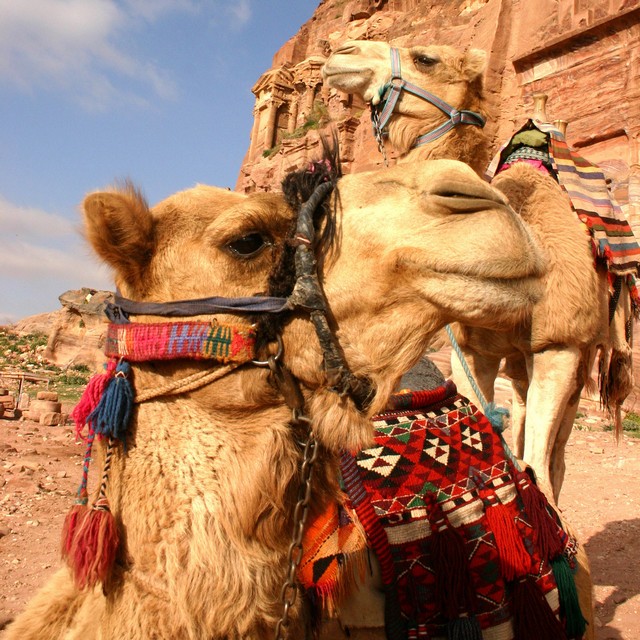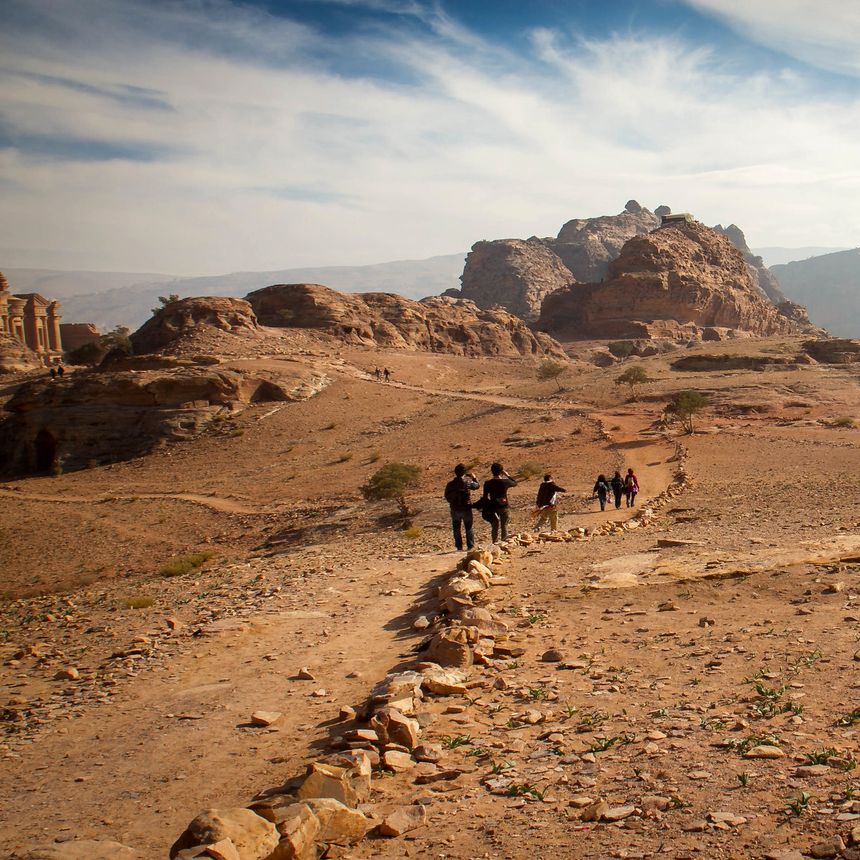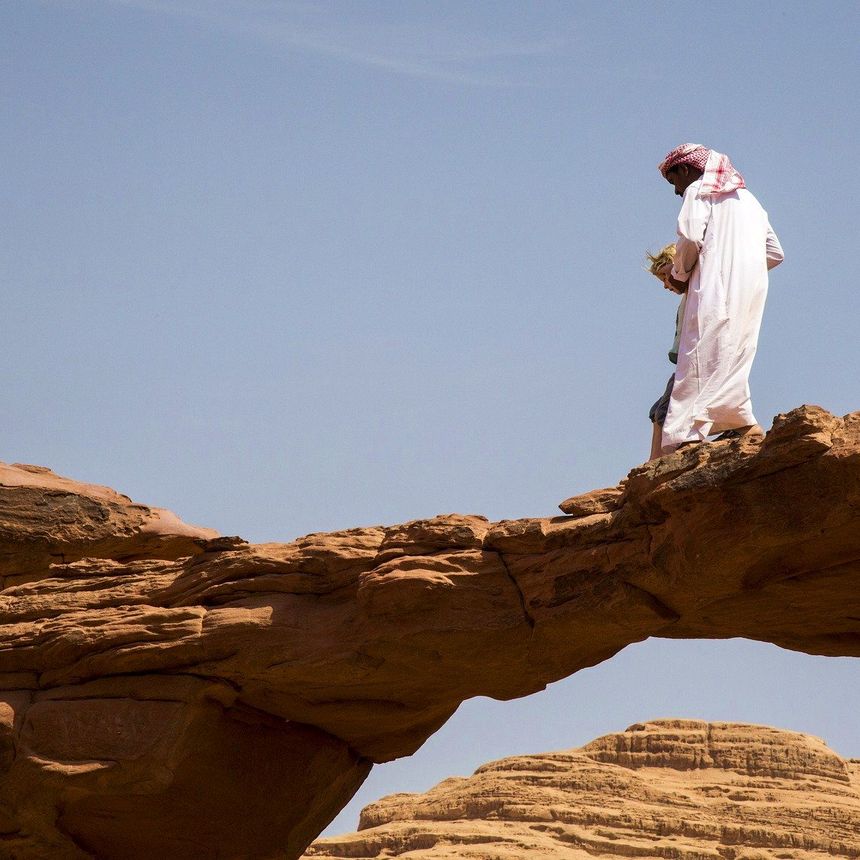
Day 1 : Arrival
Arrive into Amman airport where you will be met by a Travel The Unknown representative and transferred to your hotel where the rest of the day is at leisure.
Overnight in Ambassador Hotel, Amman
Meal plan: n/a
Jordan is a country filled with archaeological treasures. Unravel the pasts of civilisations as you explore the ruins of a rich history framed by surreal desert landscapes and the Red and Dead Seas. From the Roman amphitheatres and temples of Jerash and Umm Qais, to the crusader castles of Kerak and Shobak and the stunning elegance of the rose-red Bedouin city of ancient Petra with its incredible rock-carvings, Jordan is sure to fire your imagination.
Amman - Jerash - Ajloun - Umm Qais - Desert Castles - Qasr Al Azraq - Petra - Mount Nebo - Shobak Castle - Madaba - Crusader’s Castle of Kerak - Wadi Rum - Little Petra - Aqaba - Bethany

Arrive into Amman airport where you will be met by a Travel The Unknown representative and transferred to your hotel where the rest of the day is at leisure.
Overnight in Ambassador Hotel, Amman
Meal plan: n/a

After breakfast, leave Amman to explore Umm Qais, a northern Jordanian town known for it's proximity to the ruins of ancient Gadara. Later drive to the ancient Roman city of Jerash and the Saracen castle at Ajlun and then back to Amman.
Overnight in Ambassador Hotel, Amman
Meal plan: Breakfast

Spend half the day exploring the spectacular Amman Desert Castles of Kharana, Amra and Al Azrq with their spectacular early Islamic art complexes. In the afternoon return to Amman to see the citadel, the Roman theatre and old souks as well as a delicious street food experieince along Rainbow Street, with tastes of falafel, shwarmah, and local teas and coffee. Return to the hotel in the evening.
Overnight in Ambassador Hotel, Amman
Meal plan: Breakfast

After breakfast drive to Mount Nebo. Continue to Madaba, famed for its mosaics. After exploring Madaba's drive via the King’s Highway and see the crusader castles – Kerak and Shobak, before arriving in Petra for an overnight stay.
Overnight in Petra Moon Hotel, Petra
Meal plan: Breakfast

Full day visit of the site of Petra. Walking into Petra you will quickly realize why this ancient city is one of the world's wonders. The Victorian traveler and poet Dean Burgon gave Petra a description which holds to this day -"Match me such a marvel save in Eastern clime, a rose-red city half as old as time". Yet words can hardly do justice to the magnificence that is Petra.
Overnight in Petra Moon Hotel, Petra
Meal plan: Breakfast

Spend the morning exploring Little Petra, an important suburb of the main city. Continue to Wadi Rum and head out by Jeep to get acquainted with this incredible desert through it's lesser-known sites and watch as the desert changes colour with the setting sun. Back at camp in the heart of the desert enjoy a feast of Zarb - a traditional Bedouin dish of meat and vegetables cooked underneath the desert's sand, and a night under the Milky Way.
Overnight in Hillawi Camp, Wadi Rum
Meal plan: Breakfast & dinner

After breakfast, journey from Wadi Rum to Aqaba, set on the Red Sea coast. Take a trip to Aqaba Castle before an afternoon and evening at your leisure.
Overnight in Lacosta Hotel Aqaba, Aqaba
Meal plan: Breakfast

After breakfast, drive through the desert along the shores of the Dead Sea before arriving in Bethany, where you will visit the World Heritage baptism site. Continue to Amman for an overnight stay.
Overnight in Ambassador Hotel, Amman
Meal plan: Breakfast

After breakfast, transfer to the airport in Amman for your return flight.
Meal plan: Breakfast
All accommodation subject to availability. Final accommodation choices will be confirmed after booking.


Situated just 150m from the entrance gate to Petra, the hotel features spacious rooms with flat-screen TVs. It is a family owned hotel standing on the site of the original family home. Enjoy dining on traditional and international cuisine under moonlight on the rooftop terrace and relax with a drink at the bar.

Spend a night under the stars in this traditional Bedouin camp.

This is a luxurious hotel located in the heart of Aqaba city. All rooms are fitted with LED TVs and coffee making stations, and the restaurant has a terrace with views over the city and mountains.
Trek through Jordan's undiscovered trails
Discover the Red Sea's exhilarating range of water sports
Day trek ideas along the Jordan Trail.
Welcome to Jordan, the gateway to the Middle East
Walk the Land of the Bedouins
Discover Jordan's archaeological secrets
Special tour for Uncharted X clients
The highlights and history of Jordan
Nikki Kemp , Tailormade JordanThank you for organising our Jordan trip. We both had a fantastic time, everything went very smoothly,and this is the first time I have ever used an ‘organised trip’ but it made everything stress free and enjoyable. Very well organised. The driver Bashir, was absolutely brilliant - very friendly, kind,patient, and informative and really made the trip special and memorable for us and we learnt many things on route that would never have known if it wasn’t for local information. Thank you very much for your support for a wonderful trip!

David & Julia McPhail , Tailormade JordanJerash was fascinating, loved the mud at the Dead Sea, Bethany was very interesting. Petra by night... AMMMMMMMMMMMAAAAAAAAAZZZING, candle-lit all the way to the treasury with two musical instruments being played - the sound echoing around the city was truly mesmerizing, a wonderfully mystical experience. Fantastic guide too. Thanks for all your help.

Marie , Along Bedouin Trails, JordanWhat a great trip this was. Jordan is a magical county, the people friendly, the weather marvellous, the sights, sounds and smells unique. The small group got on well and I will definitely be back on one of your trips again soon.

Ian Shaw , Land of the Bedouins, JordanTravel The Unknown provided me with an excellent opportunity to discover the amazing country that is Jordan. Without their organisation and attention to detail I would have never have experienced so much diversity and interest in such a short time. Thanks so much.
